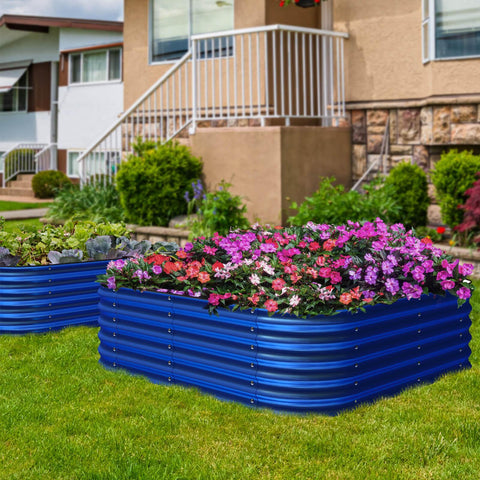Transform Your Yard: Creating a Butterfly Haven with Raised Bed Gardens
Butterflies are not only beautiful creatures that grace our gardens with their vibrant colors and graceful flight but also important pollinators that play a crucial role in maintaining the ecological balance. Creating a butterfly garden is a delightful way to attract these winged wonders to your outdoor space. One innovative approach to achieving this is by incorporating raised bed gardens into your landscape. In this article, we'll explore how to create butterfly gardens with raised bed gardens, offering a sustainable and visually appealing solution to support these delicate creatures.
Why Choose Raised Bed Gardens for Butterfly Gardens?
Raised bed gardens offer several advantages for butterfly gardening:
Improved Drainage: Raised beds typically have better drainage than traditional in-ground gardens, preventing waterlogging and providing a healthier environment for both plants and butterflies.
Controlled Environment: You can control the soil quality, composition, and amendments in raised beds, creating the ideal conditions for butterfly-attracting plants.
Reduced Weeding: Raised beds can be designed with weed barriers, reducing the need for constant weeding and maintenance.
Accessibility: The elevated nature of raised beds makes it easier for you to access your garden and observe butterflies up close.
Aesthetic Appeal: Raised beds can be designed to enhance the visual appeal of your garden, making it a true oasis for both you and the butterflies.
Now, let's delve into the steps to create a butterfly garden using raised bed gardens:

Step 1: Select a Suitable Location
Choose a sunny location for your raised-bed butterfly garden. Butterflies are cold-blooded creatures, so they require warmth from the sun to be active. Make sure the area receives at least 6 hours of sunlight per day.
Step 2: Design Your Raised Bed Gardens
Design your raised bed gardens to fit harmoniously into your landscape. Consider using a variety of shapes, sizes, and heights to create visual interest. Remember to leave enough space between beds for easy movement and maintenance.
Step 3: Choose Butterfly-Friendly Plants
Select nectar-rich and host plants that attract butterflies. Some popular choices include
Nectar Plants: Butterfly bushes, coneflowers, salvia, and lantana.
Host Plants: Milkweed for monarch butterflies, parsley for swallowtails, and dill for black swallowtails.
Make sure to choose a mix of plants that bloom at different times throughout the season to provide a continuous food source for butterflies.
Step 4: Prepare the Soil
Fill your raised beds with a well-draining, organic soil mix. Add compost to enrich the soil and provide essential nutrients for your plants. Ensure the soil is loose and well-aerated to encourage healthy root growth.

Step 5: Plant Strategically
Place taller plants at the back of your raised beds and shorter ones at the front. This creates a layered effect, making your garden visually appealing and providing easy access for butterflies.
Step 6: Add Butterfly-Friendly Features
Enhance your butterfly garden by including features such as:
Shallow dishes with water and rocks for butterflies to drink from.
Flat stones or logs for basking in the sun.
Windbreaks or trellises to protect the garden from strong winds.
Step 7: Maintain Your Garden
Regularly water your garden to keep the soil consistently moist, but avoid overwatering. Mulch can help retain moisture and deter weeds. Prune and deadhead spent blooms to encourage new growth and more butterfly visits.
Step 8: Observe and Enjoy
Now that your raised bed butterfly garden is in full swing, take time to observe and enjoy the butterflies that visit. Keep a journal to document the species you see and their behaviors. You might even consider participating in citizen science projects that track butterfly populations.
Creating a butterfly garden with raised bed gardens not only beautifies your outdoor space but also provides a vital habitat for these enchanting insects. By following these steps and maintaining your garden with care, you'll create a haven that attracts butterflies, supporting their conservation while offering you a delightful and educational experience in your own backyard. So, get ready to transform your yard into a butterfly paradise and let your love for gardening take flight!
